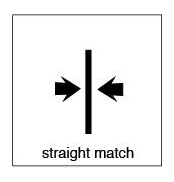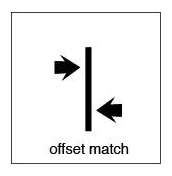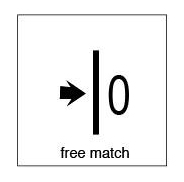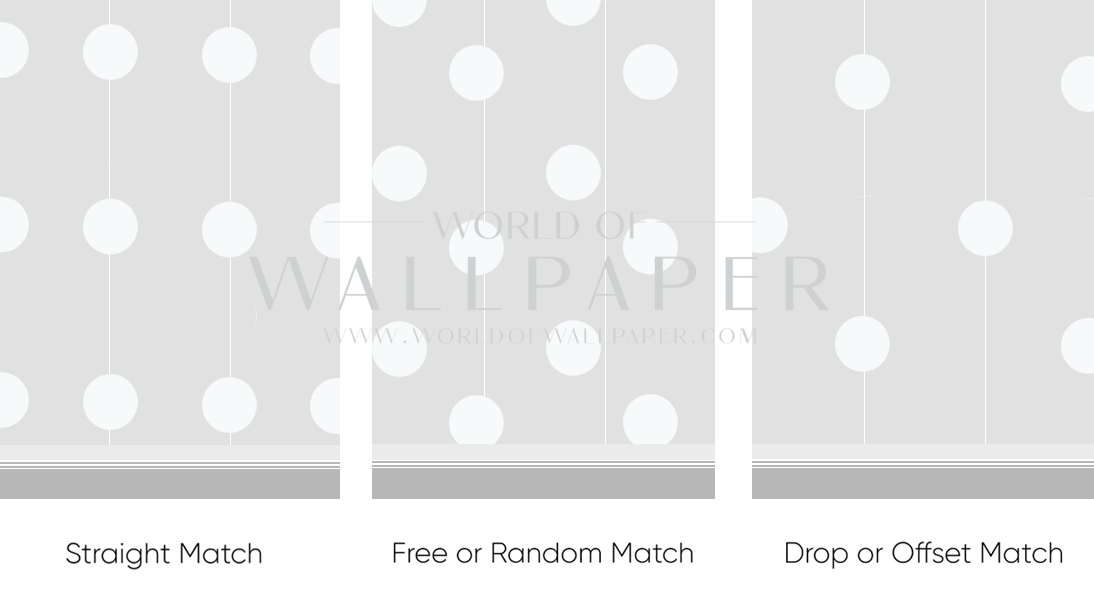If you’re new to wallpaper, then it is likely that you are unfamiliar with the jargon that you are suddenly trying to make sense of. You may not have even been aware that there are different types of wallpaper out there, but there are and it is important to consider them before deciding which wallpaper is best for you. The type of wallpaper you choose can depend on a number of factors, and we are here to help. This blog will explain the different types of wallpaper available and what factors to consider when deciding which type of wallpaper is best for you.
The three main ways that wallpapers differ are by pattern repeat, pattern match and the way that the wallpaper is hung (application). Wallpapers also have different measurements and different levels of durability; more hard-wearing wallpapers would be suited to hallways and living rooms because these rooms are used the most.
Please note that the terms used for different types of wallpaper (e.g. pattern match) vary from company to company. However, the terms that are used in this blog are what we use to refer to wallpaper types on our website, WorldofWallpaper.com.
Below is a breakdown of what the three different wallpaper types are:
1) Pattern repeat
Definition: The vertical distance between where the pattern is identical again (repeats).
Pattern repeats differ, but common pattern repeats would be 26.5, 53cm or 64cm. Always measure the height between your ceiling and the floor before ordering wallpaper, considering the length of the pattern repeat.
2) Pattern match
Definition: How the wallpaper is hung so that the pattern matches from sheet to sheet.
There are different types of pattern match that you can choose from:
- Straight pattern match – This means that the design has to match the strips on either side, so you have to bear in mind how long your wall is, and line up the paper correctly each side.

As you can see from the picture, the pattern must line up directly. This may mean that you have to waste quite a lot of wallpaper to make sure that the pattern always matches.
- Offset pattern match – Also known as half-drop, this is the hardest wallpaper to apply and creates the most wastage.

Offset match wallpaper typically repeats at the ceiling line on every other strip and the design tends to run diagonally. It requires three strips of wallpaper to repeat the vertical design.
- Free match – This is the easiest way to apply wallpaper because the pattern is completely random!

Therefore, it is perfect for beginners as you do not need to worry about where the pattern repeats at all. It also creates the least wastage.
Below is a more visual guide to different types of pattern matches...
3) Application
Application is the way that the wallpaper is hung. On our website, this can be done one of two ways. The difference between these is the way of activating and applying the paste for the wallpaper.
- Paste the paper – As it says in the name, you apply the paste to the wallpaper. With this method, you need to soak the wallpaper in the paste for around 8-12 minutes per strip, and then hang it to the wall.
- Paste the wall – This is a relatively new way of hanging wallpaper and much easier than paste the paper. This is because you do not need to let it soak in paste, but instead, you apply the paste directly to the wall, and then hang the wallpaper straight afterwards. This wallpaper is stronger than paste the paper and does not expand when the paste is applied. Again, this way of applying wallpaper is ideal for beginners.
The pattern repeat and the pattern match are the main things to watch when choosing wallpaper. If you have straight match wallpaper for example, you need to see how many cm is it until the next pattern falls vertically. If this is 53cm, you need to align the pattern, and then cut off the excess wallpaper at the bottom and the top.
Overall, if you don’t take anything else away from this blog, you should note that the easiest combination of wallpaper types is a free pattern match that is paste the wall. This is because you do not need to soak the wallpaper; you can just apply the paper to a pre-pasted wall. Also, you do not need to worry about matching the pattern in the right place and cut the wallpaper to do so. This means that there is minimal wastage and minimal mess, making it perfect for a first-timer.
I hope that this post has helped to prepare you for what is to come when applying wallpaper if you’re attempting to apply it yourself, and to clarify all the different types of wallpaper you can get and which may be best for you.
Check out our wallpaper calculator to see how many rolls of wallpaper you will need for your room by clicking the link below:
https://www.worldofwallpaper.com/wallpaper-calculator
Have a great week and happy wallpapering!
Emma

 United States
United States Australia
Australia Republic of Ireland
Republic of Ireland

